Preschool Exercise Equipment: Promoting Fitness and Fun for Kids

Early childhood is a crucial period for developing physical, cognitive, and social skills. Encouraging movement and exercise in preschool-aged children helps build coordination, balance, strength, and overall health. Preschool exercise equipment offers engaging ways for young children to be active, supporting their physical development while making fitness fun.
This guide explores the benefits, types, and considerations of preschool exercise equipment, including kids fitness equipment and preschool gym equipment, to help parents, educators, and childcare centers make informed choices.
Why Preschool Exercise Equipment Matters
Physical activity in early childhood lays the foundation for lifelong health and wellness. Using preschool exercise equipment provides several advantages:
1. Develops Gross Motor Skills
Equipment such as balance beams, climbing structures, and wobble boards helps children improve balance, coordination, and overall body awareness. These gross motor skills are essential for walking, running, jumping, and other physical activities.
2. Supports Healthy Growth
Active play using preschool gym equipment encourages cardiovascular fitness, muscle development, and bone strength, which are critical during early growth stages.
3. Enhances Cognitive Development
Movement and exercise stimulate brain activity, improving focus, problem-solving, and learning readiness. Kids who are physically active often display better attention spans and memory retention.
4. Encourages Social Interaction
Exercise equipment in group settings promotes teamwork, communication, and social skills. Children learn to take turns, share, and collaborate while using kids fitness equipment.
5. Fosters Healthy Habits
Introducing active play at a young age instills a positive attitude toward exercise, helping children develop lifelong healthy habits.
Types of Preschool Exercise Equipment
There are various options for preschool exercise equipment, designed to engage children safely and effectively.
1. Balance and Coordination Equipment
Items such as wobble boards, stepping stones, and balance beams challenge children to maintain stability while moving, strengthening core muscles and coordination.
2. Climbing and Crawling Structures
Small indoor climbing walls, tunnels, and soft play structures help children build strength, agility, and spatial awareness. These activities also encourage problem-solving and risk assessment.
3. Cardio and Movement Equipment
Mini-trampolines, hopping pads, and balance bikes provide cardiovascular exercise while enhancing coordination and motor skills.
4. Strength and Resistance Equipment
Light resistance bands, soft weights, and push/pull toys encourage safe strength-building exercises suitable for preschoolers.
5. Interactive and Sensory Equipment
Interactive mats, activity panels, and sensory pathways engage multiple senses while promoting physical activity. These options are particularly effective for children with diverse learning needs.
Benefits of Kids Fitness Equipment in Early Childhood
Using kids fitness equipment offers advantages beyond physical development:
1. Improves Focus and Learning Readiness
Movement helps regulate energy levels and enhances attention, making children more prepared for structured learning activities.
2. Reduces Stress and Anxiety
Physical activity releases endorphins, helping children manage stress and express energy in a positive way.
3. Builds Confidence and Independence
Successfully navigating exercise equipment promotes self-esteem and encourages children to take on new challenges.
4. Supports Inclusive Play
Preschool gym equipment can be adapted for children of varying abilities, fostering inclusive play and teamwork.
Choosing the Right Preschool Exercise Equipment
Selecting appropriate equipment ensures safety, engagement, and developmental benefits:
1. Safety and Durability
Look for non-toxic, sturdy materials with rounded edges and non-slip surfaces to prevent accidents. Equipment should comply with safety standards for young children.
2. Age Appropriateness
Ensure the size, weight, and complexity of the equipment match the age and developmental stage of children. Adjustable equipment can grow with the child.
3. Versatility and Engagement
Choose equipment that supports multiple activities, allowing children to use it in different ways to prevent boredom and maximize physical development.
4. Space Requirements
Consider the area available for play. Compact or modular equipment works well in classrooms, homes, and smaller indoor spaces, while larger setups suit gyms or outdoor playgrounds.
5. Maintenance and Hygiene
Equipment should be easy to clean and maintain, particularly in shared environments like preschools or daycare centers.
Tips for Integrating Preschool Exercise Equipment
Incorporating exercise equipment into daily routines enhances its effectiveness:
- Create a Schedule: Regularly set aside time for active play sessions.
- Combine Learning and Movement: Incorporate counting, colors, or shapes into physical activities.
- Supervise and Guide: Provide support and encouragement while allowing independent exploration.
- Rotate Equipment: Keep activities fresh by rotating toys and apparatus to maintain interest.
- Encourage Group Play: Promote collaboration and turn-taking to enhance social skills.
Indoor vs. Outdoor Preschool Exercise Equipment
Indoor Equipment:
- Mini climbing structures, wobble boards, and balance beams
- Soft mats and tunnels
- Interactive activity panels
Outdoor Equipment:
- Playground slides, swings, and climbing frames
- Balance bikes, hopscotch paths, and mini-trampolines
- Obstacle courses for gross motor development
Both indoor and outdoor options complement each other, providing a comprehensive physical development experience for preschoolers.
Conclusion
Preschool exercise equipment is an essential tool for promoting physical, cognitive, and social development in young children. Using kids fitness equipment and preschool gym equipment, educators and parents can create fun, engaging, and safe environments that encourage movement, improve focus, and foster healthy habits.
Incorporating age-appropriate exercise equipment into classrooms, homes, and play areas helps children develop strength, coordination, and confidence while enjoying active play. By investing in quality preschool exercise equipment, caregivers can support the holistic growth and well-being of every child.
Explore a variety of flexible and engaging seating and exercise solutions at Action Based Learning.



